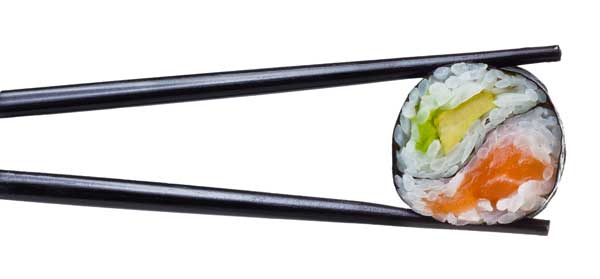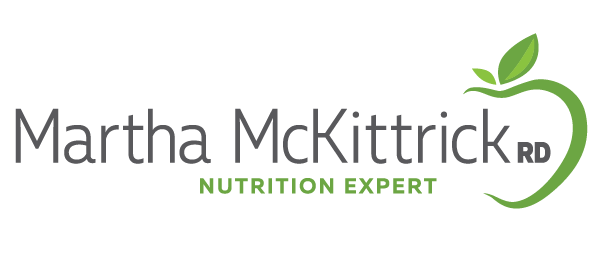8 Tips to Eat Your Way to Better Health

 March is National Nutrition Month and it is the perfect time to reflect on the kind of fuel you put into your bodies. Read on to learn my 8 simple tips to improve your diet. This blog post appeared on the Gnu Food website.
March is National Nutrition Month and it is the perfect time to reflect on the kind of fuel you put into your bodies. Read on to learn my 8 simple tips to improve your diet. This blog post appeared on the Gnu Food website.
Most of us have hectic schedules and grab food on the run. Unfortunately this can lead to not-so-healthy food choices that contain too much fat, sugar and sodium and too few fruits, veggies and fiber. This can take a toll on our energy levels, weight and overall health. When we do take the time to consider the food that we eat, many of us tend to get overly focused on certain areas of nutrition (i.e. low carb, low calorie, low fat, food combining, organic, etc.) and forget about the big picture. (pic: munchonme.com) With this in mind, here are 8 simple tips to help you eat your way to better health:
1. Increase your Intake of Fruits and Veggies
Are you getting the recommended 4-5 cups a day? I bet most of you will answer no! Fruits and veggies provide vitamins, minerals, fiber and disease fighting phytochemicals (chemicals found in plants). They can also help to fill you up with minimal calories. Try these tips:
– Buy fresh fruit weekly and keep it in sight. The more visible something is, the greater the chances are that you will eat it
– Do your fresh veggies go bad before you eat them? If so, try frozen veggies. They are just as nutritious as fresh vegetables, but last much longer
– Bring fruit to work with you each morning. It will help you stay away from the vending machines
– Add veggies to your favorite dishes: soups, stews, meatloaf, lasagna and other grain dishes
2. Eat More Whole Grains
Many of us get stuck in a rut with the “white stuff”! Whole grains provide more vitamins, minerals, fiber, antioxidants and phytochemicals. In addition, they can reduce risk of heart disease, cancer and diabetes and may aide in weight  management. Whole grains are found in whole-wheat pasta, brown rice, whole grain breads and cereals. But don’t be afraid to be adventurous! Whole grains are found in other less common grains such as wheat berries, whole-wheat couscous, kasha and amaranth. Ideally, we should be eating at least 1/2 of our grain intake from whole grains.
management. Whole grains are found in whole-wheat pasta, brown rice, whole grain breads and cereals. But don’t be afraid to be adventurous! Whole grains are found in other less common grains such as wheat berries, whole-wheat couscous, kasha and amaranth. Ideally, we should be eating at least 1/2 of our grain intake from whole grains.
3. Become Food Label Savvy
Studies show that most people don’t pay attention to food labels. Many restaurants post the nutritional content of menu items online or directly on the menus, so be on the lookout. Chances are, what you see will shock you! Here are tips as to what to look for on the label:
– Calories per serving
– Fat content. While eating fat in moderation is a good idea, what is more important is the type of fat you eat. Avoid foods that contain trans fats and limit foods high in saturated fat
– Fiber content. It is recommended that most people consume at least 25 grams of fiber per day
4. Lighten-Up your Dairy Products and Meats
Select fat-free and low fat milk, yogurt and cheese (or at least smaller portions of the full-fat versions), as well as leaner cuts of meat and skinless poultry. It will be easier to identify these leaner, healthier cuts of mean because a new labeling law just went into effect.
5. Use Smaller Plates, Bowls and Glasses
Sounds simple, but this little tip can help decrease your food intake by 25%, depending on the size of the plate, bowl, or glass.
6. Limit Your Sodium Intake
2300 mg a day is the recommendation for most people; however, people with high blood pressure, diabetes, kidney disease and anyone over the age of 51 should aim for 1500 mg of less. Most of the sodium we eat is found in processed food, so buy fresh meats, fish, poultry, unsalted nuts and eggs to lower your sodium intake. Make sure to taste food before adding salt and try cooking with herbs as a substitute if a meal is lacking flavor.
7. Limit Your Sugar Intake
Limit added sugars by reducing the number of sodas, sweetened ice teas, fruit-flavored sports drinks and flavored waters you drink each day. Make sure to drink more water and eat fruit for dessert instead of high-fat, sugary treats.
8. Move It!
A list of nutrition tips wouldn’t be complete without addressing physical activity. It’s recommended that we exercise at least 30 minutes per day, 5 times per week (ideally more if you are trying to lose weight). This may seem like a lot, but the good news is that it doesn’t have to be all at the same time! Brisk walking for 10 minutes, 3 times per day, is the perfect way to add some physical activity to your healthy lifestyle.
Use National Nutrition Month as a time to reflect on what you eat and start making some healthy changes. Use these tips and stay focused on the big picture to eat your way to better health!
For more info, check out these links:
Fruits and Veggies More Matters
RD411
RELATED POSTS
MEET MARTHA
I especially love problem-solving, whether it’s helping women defeat issues plaguing them for years, helping a busy executive find practical ways to get heart healthy, or providing tips to help you reverse diabetes. That’s why I’m on a constant quest to expand my knowledge by staying on top of the latest research.

20 Ways To Eat Out 550 Calories or Less!
No time to cook? We’ve got you covered. Here are 20 healthy meals from a variety of cuisines that won’t pack on the pounds. Most of them also have less than 30 grams of carbs.
Subscribe to my newsletter and get this free download.



